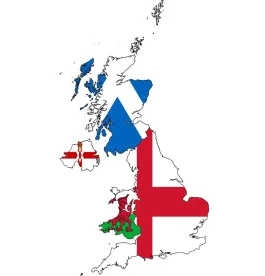The Cabinet Office, the Department for Business, Energy and Industrial Strategy and the Health and Safety Executive must be heaving a collective sigh of relief.
Not only have they pushed out a 60-page Covid-19 strategy document entitled “COVID-19 recovery strategy”, but also the specific guidance for employers “to help get Brits back to work”, including eight specific sector guidance documents. No doubt the product of many late nights over the last week or so.
However, we expect this reprieve may be short-lived. The Prime Minister’s speech on Sunday night was widely panned for being too vague (although this was hardly unexpected) and we were promised more detail in the guidance. However, the nature of the coronavirus beast is that there are many unknowns. Combine that with the breakneck speed at which the government has had to produce the guidance, and perhaps some gaps are inevitable. The reality is that despite the gallons of ink spilled on these lengthy documents, there are more than a few gaps and many unanswered questions. Much of it has been heard before – the reference in the flysheet of the published hard-copy document being made of 75% recycled materials is true in more ways than one.
We, therefore, expect these documents to be far from the final word and that they will be updated piecemeal as they are picked apart by commentators, much like the Job Retention Scheme guidance. That is not a criticism in this case – guidance that did not evolve with time and circumstances would quickly become a liability and the difference between this and the Job Retention Scheme output is that the latter did not answer obvious questions and was in parts not only wholly impracticable from the start but worse, quite clearly so.
We will provide a more detailed review of these documents in the comings days, but for now, the headlines.
Strategy Document
This document sets out the government’s phased approach to unravelling the various lockdown measures in place for the last 100+ days. The intention is that the UK will now move out of the first phase of dealing with the virus and move into phase two (“smarter controls”) before eventually moving into phase three (“reliable treatment”).
The stated aim is to “return life to as close as normal as possible, for as many people as possible, as fast and fairly as possible… in a way that avoids a new epidemic, minimises lives lost and maximises health, economic and social outcomes”.
In phase two, the government has stated it will, therefore “introduce a range of adjustments to current social distancing controls, timing these carefully according to both the current spread of the virus and the Government’s ability to ensure safety”. These will happen in stages, with strict conditions to move safely from each step to the next.
The precise timetable for these adjustments will depend on the infection risk at each point, and the effectiveness of the government’s mitigation measures like contact tracing. However, if the virus flares up again, e.g. in a particular geographic area or due to uptake in a particular activity, more stringent restrictions may be imposed again – but these will be focussed on those areas or activities.
The dates in the roadmap below are therefore indicative only and heavily conditional.
Step 1 – From Tomorrow (Wednesday 13 May):
-
For the foreseeable future, workers should continue to work from home rather than their normal physical workplace, wherever possible.
-
All workers who cannot work from home should travel to work if their workplace is open. This does not seem hugely different from the directives given to employees to date, other than the tone, which suggests a positive movement towards getting back to work. This tonal shift may affect discussions with employees around a return but does not make any difference to their rights and obligations, as it does not change the underlying law. We will be writing more detail on this in the coming days.
-
It has been widely reported that the uptake in school places for children of key workers has been fairly low during the lockdown period. Local authorities and schools are being asked to renew their encouragement to those children to come back to school where it is felt that they would benefit from attending in person.
-
Paid childcare, for example through nannies and childminders, can take place subject to their being able to meet the public health principles included within Annex A of the document, with the intention of enabling more parents to return to work.
-
Everybody (including critical workers) should continue to avoid public transport wherever possible.
-
The government is now advising that people should aim to wear a face-covering in enclosed spaces where social distancing is not always possible and they come into contact with others that they do not normally meet, for example on public transport or in some shops. This represents a significant change in stance – previously the view had been taken that only those in the caring professions or who actually had the virus should wear them.
-
As well as exercise (which is no longer restricted to only once per day), people can now spend time outdoors subject to continued compliance with social distancing guidelines. Somewhat bizarrely, people can also meet with one member of another household, outside, provided that the rules are complied with. Time to pick your favourite parent? There seems no obvious science to this and Dominic Raab has already come publically unravelled when questioned on how it would work in practice. The clinically vulnerable are still advised to stay at home.
-
The government will bring in more stringent measures for non-compliance. The intention is that Parliament will move towards physical proceedings in the House of Commons.
-
Quarantine for fourteen days will be introduced for those arriving in the UK by air from overseas (with some limited exceptions, e.g. France).
Step 2 (no earlier than Monday 1 June onwards, but subject to control of the virus):
-
A phased return for early years settings and schools.
-
Opening non-essential retail.
-
Permitting cultural and sporting events to take place behind closed-doors.
-
Re-opening more local public transport in urban areas, subject to strict measures.
-
The government is considering a range of options to reduce the most harmful social effects to make the measures more sustainable, e.g. potentially allowing people to expand their household group to include one other uninfected household (the “social bubble” idea seen in a number of other countries).
Step 3 (no earlier than 4 July, but again subject to control of the virus):
-
Open at least some of the remaining businesses and premises that have been required to close, including personal care (such as hairdressers and beauty salons), hospitality (such as food service providers, pubs and accommodation), public places (such as places of worship) and leisure facilities (like cinemas)
The ‘COVID-19 Secure’ Guidelines
The government has produced these guidelines with input from businesses, unions, industry bodies and in conjunction with the devolved administrations, Public Health England and the Health and Safety Executive. They cover eight of the workplace settings that are currently allowed to be open, from factories and plants to offices and contact centres. Further guidance for other sectors is being developed and will be issued at a later date ahead of those businesses re-opening.
The guidelines contain practical steps for businesses focused around the following five key points:
-
Work from home if you can. As referenced above, employers are being asked to take all reasonable steps to help people work from home. For those individuals who cannot work from home, and whose workplace has not been told to close, the government’s advice is to go to work. This aspect of the guidance has been the subject of criticism and raises a number of issues, not least how it is going to work in practice if schools are still closed/ employees are being advised not to use public transport/ that transport is still operating its currently truncated service levels, etc., none of which is due to change until June at the earliest.
-
Carry out a COVID-19 risk assessment, in consultation with workers or trade unions. This will be critical. The government expects all businesses with over 50 employees to publish the results of their risk assessment on their website. The guidance also contains a downloadable notice that businesses should display to show employees/ customers/clients, etc. that they have followed the guidelines.
-
Maintain two metres social distancing, wherever possible. Employers will have to consider redesigning workplaces to maintain two metre distances between people, for example by staggering start times, creating one way walk-throughs, etc.
-
Where people cannot be two metres apart, manage transmission risk. The guidance suggests steps such as creating workplace shift patterns or fixed teams so as to minimise the number of people in contact with one another.
-
Reinforce cleaning processes. Workplaces will have to be cleaned more frequently, paying close attention to high-contact objects like door handles and keyboards. Handwashing facilities or hand sanitisers should be provided at entry and exit points.
The devil, of course, will be in the detail and the guidelines contain many practical considerations of how the recommendations can be applied in the workplace. Businesses will need to look at what they do and how they do it and translate the recommendations into specific actions based on the nature and size of their business and how they are organised, managed and regulated.
It is also important to remember that the underlying law governing employment, health and safety and discrimination has not changed and employers should continue to ensure they comply with their legal obligations.
The guidelines state that they apply to UK employers, but they go on to say that employers in Northern Ireland, Scotland and Wales should read them in conjunction with local health and safety requirements, as health and safety is a devolved matter.
As part of the announcement, the government has also made an extra £14 million available for the Health and Safety Executive for extra call centre employees, inspectors and equipment.





 />i
/>i

